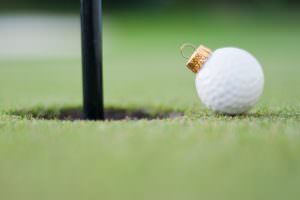Higher Learning – the Gin Library at Galgorm Spa & Golf Resort
This series will highlight the spirits of golf – the history, brands, players and drinks that have contributed to the enjoyment of the game
While gin is considered the national drink of England, and currently Scotland is the leading producer of gin in the British Isles, producing 70% of the annual total, it is at a luxury resort in Northern Ireland where you will receive the best education on gins from around the world and their magical mixing and medicinal qualities.
The Gin Library at Galgorm Spa & Golf Resort boasts over 300 bottles from not only the United Kingdom but from as far away as New Zealand to local favourites. There is also an equally impressive array of flavourful and unique tonics to pair with them. The gins range in price from £7 a taste.
Northern Ireland is gaining an international reputation for its gin distilleries notably for their use of unusual local ingredients and botanicals including – sugar kelp, pink heather, rowan berries and sweet gale among others.
Galgorm Estate Gin developed with Copeland Distillery of Antrim, features botanicals from the estate’s gardens for a unique authentic taste of the resort itself.
Hinch Distillery’s, Ninth Wave gin’s story is steeped in Irish mythology and whose consumption is said to assist you in conquering the Ninth Wave the only way to access the island home of the Irish Sea God ‘Mac Lir,’ the Otherworld, that is invisible to the naked eye but is a place of eternal youth and beauty, devoid of all sickness and death. That’s just one of the magical powers of this beloved spirit.
One of the best ways to start your education on the appreciation of gin is to join one of their daily gin tastings. Every evening at 6:30pm, for £30, one of their knowledgeable mixologists, Ryan or Jordan, will lead you through a unique tasting experience. It starts with the classic French 75 gin cocktail, followed by a G & T made with a local distilled gin.
To customise this experience guests are encouraged to garnish their drinks from the many items on the botanical board making it truly a personal cocktail, rather than a plain G & T.
You are then treated to an international gin that features contrasting flavour profiles to appreciate the wide complexities the spirit embraces.
If you are staying several nights you may chose to attend several tasting as throughout the week the gins featured change each evening.
Galgorm’s French 75
Named after the French 75-mm gun used in WWI, this elegant cocktail packs a deadly punch.
- 1 ½ ox Galgorm Estate Gin
- ¾ oz Fresh Lemon Juice
- ¾ Simple Syrup
- 2-3 oz Champagne, Sparkling Wine, Prosecco
- Lemon Peel for Garnish
In a cocktail shaker with ice – shake together the gin, simple syrup and lemon juice until chilled. Pour into a chilled Champagne flute and top with chilled Champagne, Prosecco or Sparkling wine Garnish with lemon curl.
Gin, especially paired with tonic and a squeeze of lime is actually a triple healthy medicinal tipple. So much so that Winston Churchill famously said. “The gin and tonic has saved more Englishman’s lives, and minds, than all the doctors in Europe.”
One of the earliest references to juniper barriers being steeped in wine to eliminate chest pains dates back to 70AD. It really took off in the 16th century in a Dutch distillate called ‘genever’ or ‘jenever’. The British soldiers fighting in the 30 Years War warmed to the liquid referring to it as “Dutch Courage” and brought it back across the channel.
By the 1700s it had been Anglicized into gin. The earliest known written reference is in a wonderfully titled book ‘The Fable of the Bees, or Private Vices, Publick Benefits,’ by Bernard Mandeville. Legend has it that the English, during the ‘Gin Craze’ of the 18th century, couldn’t pronounce genever correctly after a few glasses and shorten it to just gin.
William III, of Orange fame, saw to increase his national spirits’ popularity by giving tax benefits on spirit production causing an explosion of non-regulated distilleries and gin becoming less expensive than beer. However, much of the medicinal benefits of the junipery spirit were lost in shady distilling practices that often saw turpentine, sulphuric acid and sawdust added to the toxic mix.
Taxes and distillers fees imposed in the mid 1700s, to curb ‘The Gin Craze” and to get London working again, saw beer back in the number one spot by 1830. But 1830 also saw Aeneas Coffey’s new commercial still revolutionize the spirits industry and gin was back.
This time without the turpentine, sulphuric acid and sawdust – just distilled spirits. About this time Britain was expanding her influence across the globe and into many tropical and malaria prone locations.
The Spanish had known quinine, made from the bark of the cinchona tree native to Peru, since 1632 as an effective deterrent against malaria. However, it was extremely bitter and around the mid 1800s Schweppes introduced a more palatable Indian Quinine Tonic that paired well with gin. As gin kept better on long trips and in hot, humid weather the British Navy took to stocking it on long voyages instead of beer rations.
Adding a lime to the mix was originally to keep scurvy away but also aided in improving the taste of the concoction for even the casual drinker, hence The G & T was born never to look back.










